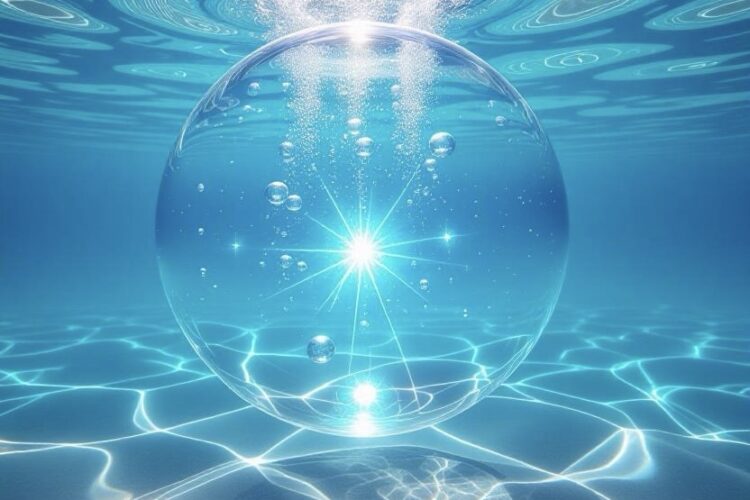Sonoluminescence is a fascinating phenomenon where sound waves make tiny bubbles in liquid, usually water, collapse and emit light. Discovered in 1934, it involves acoustic cavitation, where ultrasound creates extreme heat and pressure inside gas-filled bubbles, forming a plasma that glows briefly. Single-bubble sonoluminescence (SBSL) traps one bubble for intense, periodic light pulses, while multi-bubble sonoluminescence (MBSL) involves many bubbles and ties to sonochemistry, producing free radicals for chemical reactions. Theories suggest adiabatic compression, shock waves, or quantum effects cause the light, possibly via blackbody radiation or bremsstrahlung. Experiments use ultrasonic fields in degassed water, with noble gases like argon enhancing brightness. Applications include biomedical imaging and insights into inertial confinement fusion. Research continues to explore quantum aspects and extreme physics, making sonoluminescence a window into energy and material science.
Long Version
Sonoluminescence: Transforming Sound Waves into Bursts of Light
Sonoluminescence is a captivating physics phenomenon where sound waves trigger light emission from collapsing bubbles in a liquid, typically water. This process involves acoustic cavitation, where intense ultrasound creates extreme temperatures and pressures inside gas-filled bubbles, leading to brief flashes of light. Discovered nearly a century ago, it continues to puzzle researchers with its energy concentration and potential applications in fields like sonochemistry and even analogies to inertial confinement fusion.
At its core, sonoluminescence showcases how acoustic energy can focus into a tiny hot spot, producing conditions akin to those in stars, all within a simple experimental setup. This article delves into its history, mechanisms, types, theories, experiments, and modern insights, providing a thorough exploration of this enigmatic effect.
Historical Background
The story of sonoluminescence begins in 1934 at the University of Cologne, where physicists H. Frenzel and H. Schultes first observed faint light emission during experiments with ultrasound generators immersed in water. They noticed bubbles forming and collapsing under acoustic pressure, producing a glow now known as multi-bubble sonoluminescence (MBSL). Although intriguing, the phenomenon remained understudied until the late 20th century.
A major breakthrough came in 1990 when D. Felipe Gaitan and Lawrence Crum discovered single-bubble sonoluminescence (SBSL), where a solitary bubble is trapped and driven to emit stable, periodic light pulses. This stable form ignited widespread research, revealing picosecond pulses and extreme internal conditions. Early theories linked it to chemical luminescence from free radicals, but deeper investigations pointed to thermal and electrical origins.
The Phenomenon Explained
Sonoluminescence occurs when a sound wave, often in the ultrasonic field range (20-100 kHz), induces cavitation in a liquid. Bubbles form when acoustic pressure drops below the cavitation threshold, allowing dissolved gases to expand into voids. As the pressure oscillates, the bubble undergoes rapid expansion and collapse—an implosion that concentrates energy dramatically.
During bubble collapse, adiabatic compression heats the gas inside to temperatures exceeding 10,000 K and pressures over 1,000 atmospheres, creating a plasma formation that emits light. Shock waves propagate inward, further amplifying the hot spot. This light emission is brief, often lasting picoseconds, and repeats with each acoustic cycle.
The bubble dynamics are governed by factors like bubble radius, acoustic pressure, and the surrounding liquid’s properties, making it a prime example of nonlinear physics.
Types of Sonoluminescence
Sonoluminescence manifests in two primary forms: single-bubble sonoluminescence (SBSL) and multi-bubble sonoluminescence (MBSL).
In SBSL, a single gas bubble is acoustically levitated in a standing wave, collapsing symmetrically to produce intense, synchronized light pulses. This type achieves higher temperatures and is ideal for precise experiments.
MBSL, the original form discovered, involves a cavitation field of numerous bubbles, leading to diffuse light emission. It’s closely tied to sonochemistry, where collapsing bubbles generate free radicals for chemical reactions.
Underlying Mechanisms and Theories
The exact mechanism of sonoluminescence remains debated, with theories spanning hydrodynamic, thermal, electrical, and quantum domains.
Hydrodynamic theory emphasizes bubble dynamics, modeled by the Rayleigh-Plesset equation, which describes radius oscillations under acoustic forcing. Shock waves from implosion contribute to energy focusing.
Thermal theory posits that adiabatic compression creates extreme temperatures, leading to blackbody radiation and plasma formation. Electrical theory suggests ionization and bremsstrahlung from charged particles.
Quantum theories propose quantum vacuum radiation from rapidly moving bubble interfaces. Some models combine these, attributing light to synchrotron radiation or chemical luminescence in certain cases.
Experimental Observations and Setup
Typical experiments use a quartz flask filled with degassed water, where piezoelectric transducers generate an ultrasonic field. For SBSL, the bubble is trapped at a pressure antinode, with radius varying from microns to millimeters.
Observations include picosecond pulse durations and luminescence spectra peaking in the UV-visible range. Phase diagrams help map stable regimes based on acoustic pressure and gas concentration.
Role of Gases and Liquids
Noble gases like argon, xenon, and helium enhance sonoluminescence due to their low thermal conductivity, allowing higher temperatures. An argon bubble in water, for instance, yields brighter emission than air. The liquid, usually water, influences the cavitation threshold and bubble stability.
Spectral Analysis and Light Emission
The luminescence spectrum is broadband, often fitting blackbody radiation curves but with deviations suggesting bremsstrahlung or synchrotron radiation. In MBSL, lines from free radicals indicate chemical luminescence.
Connections to Sonochemistry
MBSL is intertwined with sonochemistry, where bubble collapses generate free radicals like OH•, enabling reactions such as pollutant degradation. This hot spot chemistry mirrors extreme environments.
Applications and Future Prospects
Beyond research, sonoluminescence inspires applications in biomedical imaging, where microbubbles produce light under ultrasound. It analogies inertial confinement fusion, offering insights into energy compression.
Recent innovations include the Sonoluminescence Emitting Device (S-LED) for novel light sources. Studies on cavitation erosion and high-pressure effects continue to expand its scope.
Current Research and Challenges
As of 2025, research focuses on refining theories and exploring quantum aspects. Challenges include measuring exact internal conditions and unifying theories. Sonoluminescence remains a window into extreme physics, promising further discoveries in energy and material science.
Hashtags For Social Media
#Sonoluminescence #SoundToLight #BubbleGlow #AcousticCavitation #PhysicsPhenomenon #ScienceMagic #UltrasoundWonders #BubbleCollapse #PlasmaFormation #ExtremeTemperatures #Sonochemistry #LightEmission #CavitationEffect #ScientificDiscovery #QuantumPhysics #HotSpotScience #AdiabaticCompression #ShockWaves #PicosecondPulses #NobleGases #ArgonBubbles #BlackbodyRadiation #Bremsstrahlung #QuantumVacuum #InertialConfinement #BiomedicalImaging #ScienceFacts #MindBlown #ViralScience #PhysicsLovers
Related Questions, Words, Phrases
what is sonoluminescence | how does sound create light in bubbles | sonoluminescence explained | sound waves turning into light phenomenon | what causes sonoluminescence | history of sonoluminescence discovery | single bubble sonoluminescence details | multi bubble sonoluminescence vs single | theories behind sonoluminescence | acoustic cavitation and light emission | bubble collapse producing light | extreme temperatures in sonoluminescence | plasma formation from sound waves | experiments for sonoluminescence at home | role of noble gases in sonoluminescence | argon bubbles and brighter light | sonoluminescence spectrum analysis | blackbody radiation in collapsing bubbles | bremsstrahlung in sonoluminescence theory | quantum vacuum radiation hypothesis | applications of sonoluminescence in medicine | sonoluminescence and inertial confinement fusion | sonochemistry linked to sonoluminescence | free radicals from bubble implosions | ultrasonic fields creating light | cavitation threshold in liquids | rayleigh-plesset equation for bubbles | shock waves in bubble dynamics | picosecond light pulses from sound | how to set up sonoluminescence experiment | degassed water for sonoluminescence | piezoelectric transducers in ultrasound | future research on sonoluminescence | challenges in understanding sonoluminescence | sonoluminescence as extreme physics window






